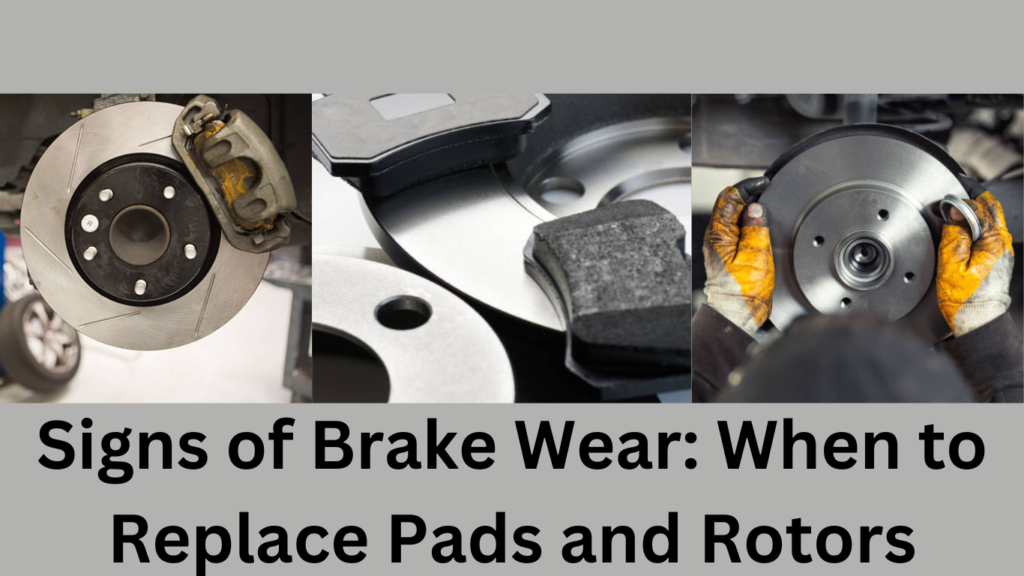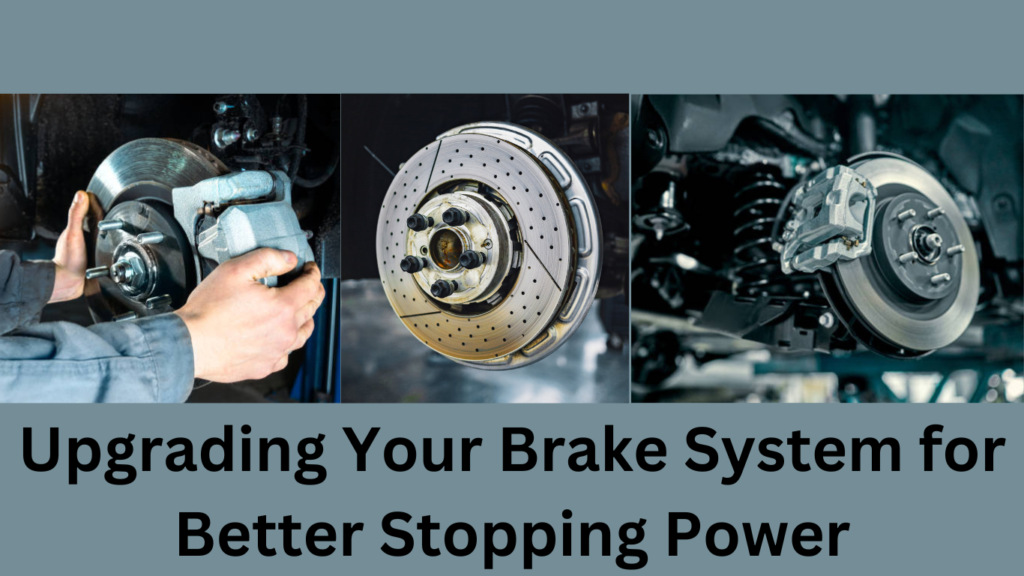If you’re a car enthusiast, there’s no denying the thrill of a powerful engine and the adrenaline rush of speeding down the open road. But amidst the excitement of horsepower and torque, there’s one essential aspect of your car that should never be overlooked – the brake system. The brakes are a fundamental safety feature of any vehicle, and understanding their components and how they work can be a valuable asset for any car owner. In this comprehensive guide, we’ll delve into the world of brake system components, demystifying their functions and shedding light on the importance of proper maintenance. So, buckle up, and let’s hit the brakes!
The Importance of Brakes
Before we dive into the nitty-gritty details of brake components, it’s crucial to understand why brakes are a cornerstone of automotive safety. Brakes are responsible for slowing down or stopping your car when necessary, preventing accidents and ensuring you have full control over your vehicle. Whether it’s a sudden obstacle in the road, a traffic jam, or a need to slow down for a turn, brakes are your trusty companions, ensuring you can navigate any situation safely.
Components of a Brake System
Your car’s brake system consists of several key components, each playing a vital role in ensuring your safety on the road. Let’s take a closer look at these components:
1) Brake Pads
Imagine brake pads as the unsung heroes of your braking system. They are the primary friction materials that make contact with the brake rotors to slow down or stop your car. Brake pads are typically made of composite materials designed to withstand high levels of heat and friction generated during braking. Over time, they wear down, which is why regular inspection and replacement are essential for optimal brake performance.
2) Brake Rotors (Discs)
Brake rotors, also known as brake discs, are metal discs that attach to the wheel hubs. When you engage the brakes, the brake pads clamp onto the rotors, creating friction that converts kinetic energy into heat and ultimately slows down your car. Rotors come in various designs, including slotted, drilled, and vented, each with its advantages and intended use.
3) Brake Calipers
Think of brake calipers as the clamps responsible for squeezing the brake pads onto the rotors. They house the brake pads and use hydraulic pressure to transmit the force applied to the brake pedal. When you press the brake pedal, hydraulic fluid flows into the calipers, causing them to squeeze the pads against the rotors. Properly functioning calipers are essential for precise and consistent braking.
4) Brake Lines and Hoses
Brake lines and hoses are the conduits that transport hydraulic fluid from the master cylinder to the brake calipers. These components must be durable and free from leaks to ensure the efficient transmission of hydraulic pressure. Any damage to the brake lines or hoses can lead to brake failure, making routine inspections crucial.
5) Master Cylinder
The master cylinder is the heart of the brake system. When you press the brake pedal, it activates the master cylinder, which generates hydraulic pressure. This pressure is then distributed to the brake calipers or wheel cylinders, initiating the braking process. A failing master cylinder can result in a spongy or unresponsive brake pedal, making it a critical component to monitor.
6) Brake Fluid
Brake fluid is the lifeblood of your brake system. It is a specially formulated hydraulic fluid that transmits the force from the master cylinder to the calipers or wheel cylinders. Brake fluid must have a high boiling point to withstand the extreme heat generated during braking. Regular brake fluid flushes are necessary to maintain its integrity and ensure consistent brake performance.
7) Brake Booster
The brake booster is responsible for amplifying the force applied to the brake pedal by the driver. It uses vacuum pressure to make braking easier and more efficient. Without a properly functioning brake booster, you’d need to exert significant effort to stop your car, which could be both unsafe and uncomfortable.
8) Wheel Cylinders (for Drum Brakes)
While disc brakes are prevalent in modern vehicles, some older models and certain applications still use drum brakes. In these systems, wheel cylinders are crucial components that push the brake shoes against the drum to generate friction and slow down the vehicle. They function similarly to brake calipers but in a drum brake setup.
9) Parking Brake (Handbrake)
The parking brake, commonly referred to as the handbrake, is a secondary braking system that mechanically engages the brakes to prevent your car from rolling when parked. While it may not be used for regular stopping, it’s essential to maintain this system to ensure your car stays in place on inclines.
How Brakes Work
Now that we’ve explored the key brake system components let’s unravel how they work together to stop your car safely. The process can be broken down into the following steps:
- Brake Pedal Application: When you press the brake pedal, you apply force to a piston in the master cylinder.
- Hydraulic Pressure Generation: The master cylinder converts this force into hydraulic pressure, which is transmitted through the brake lines to the calipers or wheel cylinders.
- Brake Pad Compression: In disc brake systems, the calipers squeeze the brake pads onto the rotors. In drum brake systems, the wheel cylinders push the brake shoes against the drum.
- Friction Generation: As the brake pads or shoes make contact with the rotating rotors or drum, friction is generated. This friction converts kinetic energy into heat.
- Slowing Down: The heat generated by the friction slows down the rotation of the wheel and, consequently, the entire vehicle.
- Release and Cooling: When you release the brake pedal, the calipers or wheel cylinders retract, allowing the rotors or drums to spin freely again. This also allows the brakes to cool down.
Understanding this sequence of events helps drivers appreciate the intricacies of the brake system and why proper maintenance is crucial.
Brake System Maintenance
Maintaining your brake system is not just a matter of safety; it also prolongs the life of your vehicle and can save you money in the long run. Here are some essential maintenance tips:
1) Regular Inspections
Routine visual inspections of your brake components are a simple yet effective way to ensure everything is in working order. Look for signs of wear on the brake pads, check for leaks in the brake lines and hoses, and inspect the rotors or drums for any visible damage. If you notice any issues, address them promptly.
2) Brake Fluid Flush
Brake fluid absorbs moisture over time, which can lead to a decrease in its boiling point and reduced brake performance. Periodic brake fluid flushes, as recommended by your vehicle’s manufacturer, help maintain the fluid’s integrity and prevent potential problems.
3) Brake Pad Replacement
Worn-out brake pads can compromise your safety and lead to more significant issues with the braking system. Most brake pads come with wear indicators that emit a screeching noise when they need replacement. However, it’s best not to wait for this warning and replace the pads as soon as they show signs of wear.
4) Rotor Resurfacing or Replacement
If you feel vibrations or pulsations when braking, it may be a sign of warped or unevenly worn rotors. In such cases, it’s essential to have the rotors resurfaced or replaced to ensure smooth and effective braking.
5) Brake Fluid Leaks
Brake fluid leaks can lead to a loss of hydraulic pressure and a soft or unresponsive brake pedal. If you notice any brake fluid on the ground or around your wheels, have the issue inspected and repaired immediately.
6) Professional Maintenance
While some brake maintenance tasks can be performed by car enthusiasts with the right tools and knowledge, it’s always a good idea to have your brakes inspected and serviced by a qualified mechanic. They can identify issues that may not be visible to the untrained eye and ensure your brakes are in optimal condition.
Conclusion
Your car’s brake system is a complex assembly of components working in harmony to keep you safe on the road. Understanding these components and their functions empowers you to make informed decisions about maintenance and repairs, ultimately ensuring your vehicle’s reliability and your safety. So, whether you’re a gearhead or a casual driver, remember that brakes are the unsung heroes of the automotive world, and giving them the attention they deserve can make all the difference when you need to hit the brakes in an emergency.



